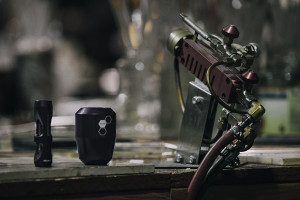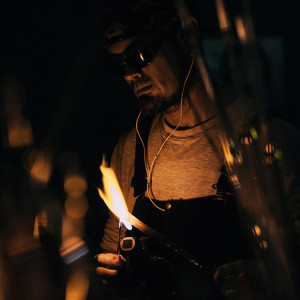

Handcrafted Borosilicate Glass
Many believe that all glass is created equal except for differences in thickness. This assumption is utterly false; there are several types of commonly used glass. The five most common types are soda lime, lead glass, borosilicate, aluminosilicate, and high silica (Vycor and fused quartz, each with different % of silica). At Pyptek, we made the choice to use high quality, borosilicate glass. The key ingredient to this type of glass is boric oxide (B2O3), which must comprise 5-13% of the glass’s chemical makeup to be called borosilicate glass. This type of glass was developed around the turn of the 20th century to help glass withstand larger temperature variations, minimizing expansion from heating and breaking due to cooling. Soda lime glass, while common and cheap to produce, cannot boast the same thermal resistivity or chemical durability as borosilicate.1 For the history of glass development as well as more information about the different properties, limitations, and uses of the five main glass types, CLICK HERE
One place where borosilicate glass is common is in laboratories. Highly durable glass that warps minimally over time from heat exposure and that is resistant to chemical corrosion make it ideal for glass lab equipment. Glass cookware such as common pie plates uses borosilicate glass because of its ability to withstand thermal variation and resistance to chemical corrosion, protecting the glass from going cloudy over the years after multiple heating and dishwashing cycles. Higher-end flashlights also use borosilicate glass for greater light transmittance. Additionally, borosilicate glass is used for glass mirror components in telescopes as well as for thermal insulation tiles on the Space Shuttle. Specialty marijuana and tobacco pipes are also made from borosilicate glass because of its high heat resistance allowing for a longer period of use and increasing durability.2 This is precisely why we made the choice of borosilicate glass for the guts of our highly engineered Prometheus line. Moreover, all of our glass pieces are handmade by local glass blowers, adding another layer of craftsmanship and individuality to each pipe.
1. “Glass – Chemistry Explained.” 2006. 12 May. 2015 http://www.chemistryexplained.com/Ge-Hy/Glass.html
2. “What is Borosilicate Glass? | ShopGrosche.com.” 2014. 12 May. 2015
http://www.shopgrosche.com/blogs/news-about-coffee-and-tea-brewing-steeping-infusion-benefits/6641136-what-is-borosilicate-glass
